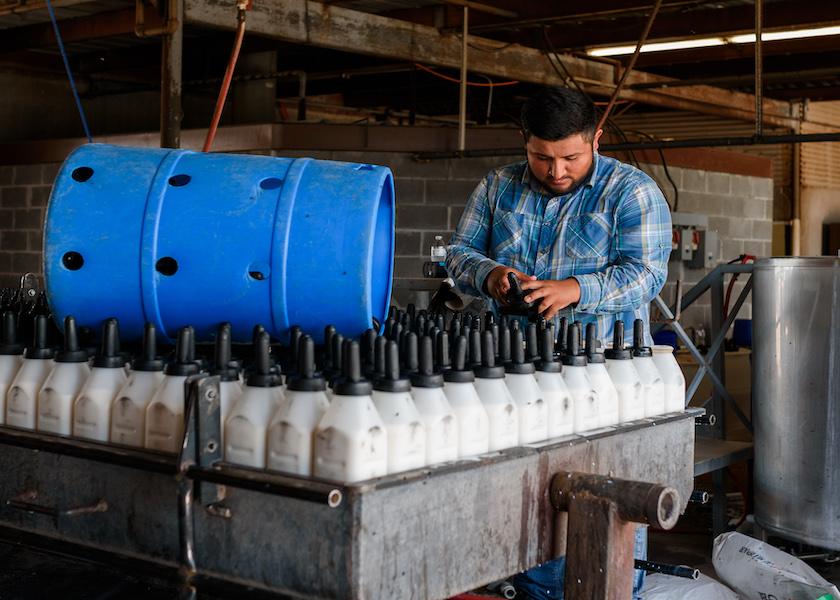Chlorine Dioxide Should be a Calf Feeder’s Disinfectant of Choice

When it comes to caring for calves, feeding equipment and pens can never be kept too clean. Though there are many different disinfectants available on the market, one is emerging as the clear cleaner of choice.
According to Donald Sockett, DVM at the Wisconsin Veterinary Diagnostic Laboratory, chlorine dioxide is an excellent disinfectant, particularly for calf feeders. It can be used at low concentrations, has a very short contact time for pathogen inactivation, resistance does not develop, and it is the least corrosive of all the oxidizing disinfectants.
Regular cleaning and the use of disinfectants can help prevent biofilms from developing. This ‘film,’ which is the enemy to all calf raisers, can harbor bacteria associated with respiratory disease, scours, roto virus and crypto. It is important to control the spread of these bacteria because they can be financially devastating.
“Before using any chlorine dioxide product, it is essential to verify the concentration of chlorine dioxide because there is tremendous variability in the chlorine dioxide concentration of commercial products in the marketplace,” Sockett says. “Typically, chlorine dioxide is used at a concentration of 25-50 parts per million (ppm) with 2 to 4 minutes of contact time for sanitizing calf feeding equipment, and at a concentration of 250-500 ppm with 5 to 10 minutes of contact time for disinfecting facilities and calf pens.”
When selecting a chlorine dioxide product, Sockett recommends the disinfectant meets or exceeds the following specifications:
1. The product is NSF/ANSI Standard 60 certified for chemical treatment of potable drinking water and for equipment sanitation. Certification means an independent organization has reviewed the product and it complies with governmental standards for safety, quality, purity, sustainability, and performance.
2. Food grade chemicals are used. Non-food-grade chemicals often contain impurities which reduce the efficiency of chlorine dioxide sanitation and disinfection.
3. The product is activated with a strong acid, not a weak acid. Strong acids are 60% more efficient than weak acids in converting sodium chlorite to chlorine dioxide. Unlike weak acids, strong acids produce no toxic residues and do not have large amounts of unreacted sodium chlorite. Large amounts of unreacted sodium chlorite reduce the predictability and performance of chlorine dioxide.
4. The vendor has expertise in cleaning, sanitation, disinfection, and chemical treatment of potable drinking water.
5. The vendor has knowledge and expertise of the subtle intricacies of chlorine dioxide generation and how changing variables such as temperature and time can have a marked effect on chlorine dioxide concentration.
6. The vendor provides the capability to quickly and reliably verify the chlorine dioxide concentrations are correct for different applications, such as chemical treatment of potable drinking water, sanitation, disinfection, and thermal fogging.







